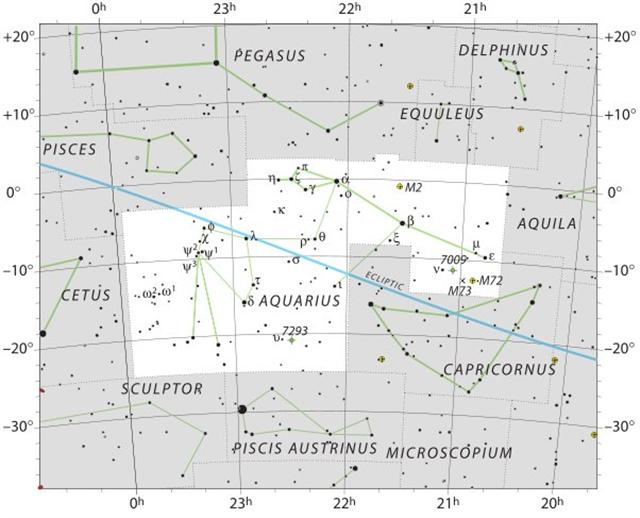I have not more than begun
presenting the glyphs in line Cb13, because
so many ideas flowed in and drowned my trail
ahead. Therefore I must take a break in
presenting the group of additional (+) pages
and first mop up glyph line Cb13:
|
February 8 |
9 |
10 (406) |
|
August 9 |
10 (222) |
11 |
 |
 |
 |
|
Cb12-24 |
Cb12-25 |
Cb13-1 (300) |
|
e ariki
noho i te henua |
kua noho
te tagata rima etahi |
Te ariki |
|
γ Pavonis (324.1), Yan
(324.6) |
Al Sa'd al Su'ud-22 /
Emptiness-11 |
no star listed |
|
Alphirk (325.7),
SADALSUD
(325.9) |
|
Al Minhar al Asad (141.6) |
Star-25 |
Al Tarf-7 |
|
ALPHARD (142.3), ω
Leonis (142.6), τ¹ Hydrae
(142.7) |
ψ Velorum (143.3),
ALTERF,
τ² Hydrae (143.4), ξ Leonis
(143.5) |
|
February 11 |
12 (408) |
13 |
14 |
|
August 12 |
13 (225) |
14 |
15 |
 |
 |
 |
 |
|
Cb13-2 |
Cb13-3 |
Cb13-4 (303) |
Cb13-5 |
|
kua huki |
ko te ika |
te mata |
te henua |
|
Castra (327.2),
Bunda
(327.5) |
Nashira (328.0),
Azelfafage, κ Capricorni
(328.7) |
Enif, Erakis (329.2), Jih,
46 Capricorni
(329.3), ι Piscis Austrini
(329.4), λ Capricorni (329.6), ν
Cephei (329.7), Deneb Algiedi
(329.8) |
θ Piscis Austrini (330.1) |
|
A
Hydrae (144.1)
Sirius
|
Ukdah (145.4), κ Hydrae
(145.5), Subra (145.8) |
ψ Leonis (146.4), Ras Elaset
Australis (146.6) |
Vathorz Prior (147.9) |
The peculiar 46
Capricorni was not in Aquarius but
apparently where the tail of the
Capricorn had its central hole (whatever
that might have signified):


Allen:
"Bayer gave A, b,
and c as Tres ultimae Deneb
Algedi; but Heis puts A in the right
fore arm, b in the belly, and
c - Flamsteed's 46 - outside of and
beyond the tail, in the ribs of
Aquarius, thus showing a change of
figuring in the past three centuries."
We can compare with what Ibn ‘Arabi had to say:
| The
Mansions of the Moon
according to Ibn ‘Arabi
(ca. 1200) |
|
|
[name] |
meaning
|
from |
attribution |
letter |
Divine Attribute |
| 22 |
Al Sa’d
al Dhabih |
The
Fortune of the Slayers |
0°
Capricorn |
Minerals
and Metals |
Zâ
(stressed z) |
The
Precious |
| 23 |
Al Sa’d
al Bula |
The
Fortune of the Swallower
|
12°51'22" Capricorn |
Plants |
Thâ (th) |
The
Nourisher |
| 24 |
Al Sa’d
al Su’ud |
The
Fortune of the Fortunate |
25°42'51" Capricorn |
Animals |
Dhâl
(dh) |
The
Humbler |
Dabih is
β
Capricorni, which in rongorongo
times rose in RA day 308.0.
Counting from Dabih to the
leading star of
Al Sa’d
al Su’ud at 25°42'51"
Capricorni we should find it around
25.714 / 360 * 365¼
= 26.1 days later, viz. in Gregorian
day 80 + 308 + 26 = 414, which
ought to be
important because 14 * 29½ =
413.
However, this position would then not be at 46
Capricorni but 414 - 409 = 5
days later, in February 18:
|
February 15 |
16 |
17 |
18 (414) |
19 |
|
August 16 |
17 |
18 |
19 (231) |
20 |
 |
 |
 |
 |
 |
|
Cb13-6 |
Cb13-7 |
Cb13-8 |
Cb13-9 (700) |
Cb13-10 (309) |
|
te vero |
te ariki puo
haú |
te moa |
kua vero |
te mamahia |
|
Kuh (331.4) |
no star listed |
η Piscis
Austrini (333.4) |
Rooftop-12 |
ι
Pegasi (335.0),
Alnair (335.1),
μ Piscis
Austrini, υ
Piscis Austrini
(335.3), Woo
(335.7), Baham,
τ Piscis
Austrini (335.8) |
|
22h (334.8) |
|
Kae Uh (334.0),
Al Kurhah
(334.4),
SADALMELIK
(334.6), ι
Aquarii, ν
Pegasi (334.7) |
|
υ¹ Hydrae
(148.4), Ras
Elaset Borealis
(148.7) |
Tseen Ke
(149.9), |
ν
Leonis (150.1),
π Leonis (150.6) |
υ² Hydrae
(151.8) |
Al Jabhah-8 /
Maghā-10 |
|
10h (152.2) |
|
AL
JABHAH
(152.4),
REGULUS
(152.7) |
|
February
20 |
21 |
22 (53) |
23 (Terminalia) |
|
August 21 |
22 |
23 |
24 (236) |
 |
 |
 |
 |
|
Cb13-11 |
Cb13-12 |
Cb13-13 (704) |
Cb13-14 (313) |
|
te vero |
te ariki |
te vage Rei |
te hokohuki i
te inoino |
|
, ζ Cephei
(336.2), λ
Cephei (336.3),
-/270 Lac.
(336.7), λ
Piscis Austrini
(336.8) |
ε
Cephei (337.2),
1/325 Lac.
(337.3), Ancha
(337.4), α
Tucanae (337.9) |
Al Sa'ad al Ahbiyah-23
/
Shatabisha-25 |
β/172
Lac. (339.2),
4/1100 Lac.
(339.4), π
Aquarii (339.5) |
|
ρ
Aquarii (338.2),
2/365 Lac.
(338.5),
SADACHBIA
(338.6) |
|
λ Hydrae (153.2) |
Adhafera, Tania
Borealis,
Simiram (154.7) |
Algieba, q
Carinae (155.5)
Castor |
Tania Australis
(156.0)
Procyon |
Perhaps
the extraordinary Cb13-14 is glyph 313
instead of glyph 314 in
order to indicate that
the following day Bissextum
was the
completed 2nd half of a cycle.
|







